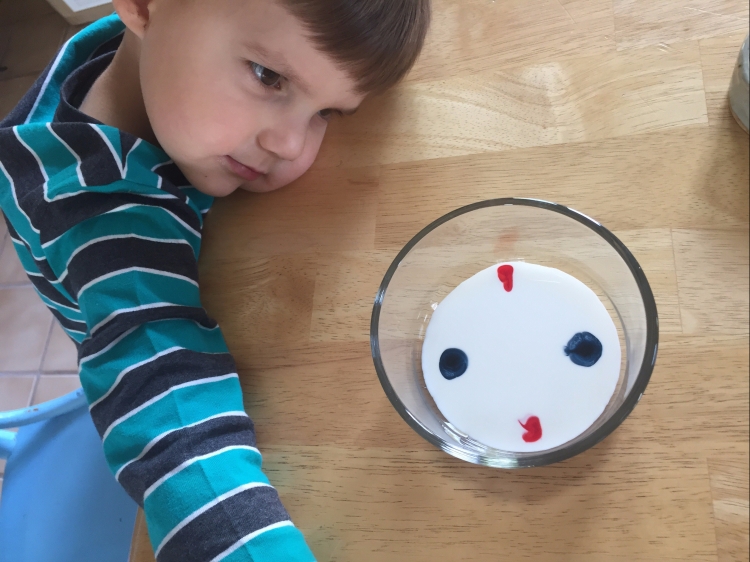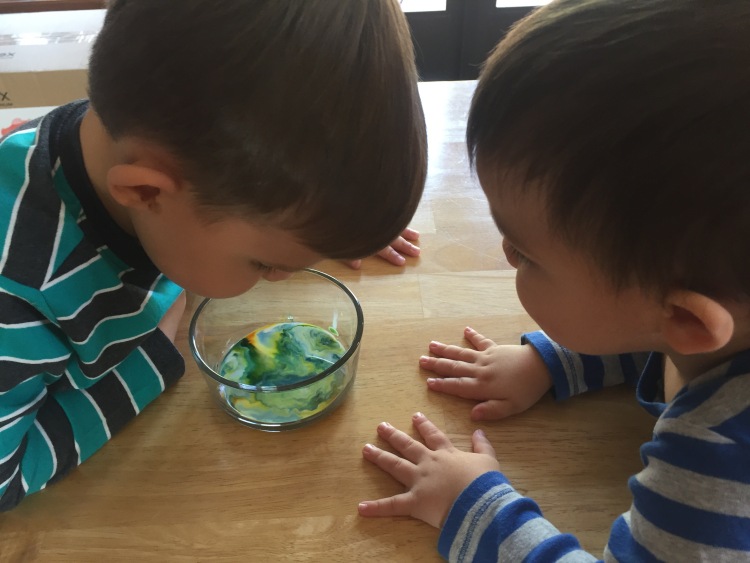All of our preschool science projects lately have to have a color-mixing element. My three-year-old is fascinated by this process and will plunge with delight into any project that involves food coloring. Here is one of my favorite science/art crossover activities, an absolute classic we enjoyed one recent afternoon:
Magic Milk
You will need:
- a shallow dish or bowl
- whole milk or cream (Note: Skim milk will not work as dramatically. You need some fat in there! We used half and half.)
- food coloring
- dish soap
- cotton swabs or toothpicks
- at least one enthusiastic child
Begin by covering the bottom of your dish with a thin layer of milk. Strategically place just a few drops of food coloring in the milk.
Notice that the drips of color — which are water-based — stay put. They don’t mix with the milk. (If your child doesn’t have much experience with seeing food-coloring react with water, you may want to try that on the side to contrast. My kid has lots of experience watching food-coloring in water because, well, #obsessed.)
Milk is full of fats, or lipids, like oil. These are non-polar molecules, which don’t mix readily with water’s polar molecules. Non-polar substances are also called “hydrophobic,” which has always struck me as a bit dramatic but communicates the same idea.

Dip your cotton swab or toothpick into the dish soap. Use it to touch — not stir — the food coloring. Watch in awe.

The soap molecules are long chains with one polar end, which mixes well with water, and a non-polar end, which mixes with the milk. This disrupts the surface tension of the milk, knocking apart all those lipids that were sticking to each other, and causes it to swirl and mix with the food-coloring!
This property of soap is the same reason you can use soap (and really need to use soap) to clean fats and oils. As a parallel demonstration, you can put a little olive oil on a dish and have your child try cleaning it off first with plain water and then with soap.
As an art extension of this activity, try combining different pairs of primary colors and discuss which secondary colors they produce when mixed.





Pingback:Science Activity: Oil, Water, and Color Mixing • This Home School
Pingback:Oil and Water Science Activity: "Iceberg" Bottle • This Home School
Pingback:Oil and Water Science Activity • This Home School